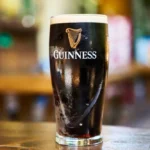
The first electric Christmas lights were invented by Edward H. Johnson, a friend of Thomas Edison, in 1882. Johnson, who was a partner at Edison’s company, hand-wired 80 red, white, and blue bulbs and strung them on a Christmas tree in his home. The display caused a sensation and was covered in the local press. Johnson continued to improve his design, and by 1890, electric Christmas lights were being sold commercially.
The first Christmas tree to be decorated with electric lights was in the home of Edward H. Johnson in New York City in 1882. The tree was illuminated with 80 red, white, and blue bulbs, which were hand-wired by Johnson himself. The display was a novelty at the time and attracted attention from the media and the public. Johnson continued to refine his design, and by the early 1900s, electric Christmas lights were becoming popular across the United States.
In 1895, President Grover Cleveland put electric Christmas lights on the White House tree for the first time. The display was a hit with the public, and many people began to emulate the idea in their own homes. By the turn of the century, electric Christmas lights were widely available and affordable, and they became a staple of holiday decorations in the United States and around the world.
The first commercially available Christmas lights were sold by General Electric in 1903. The lights were made with small, screw-in bulbs and were marketed as a safe and convenient alternative to traditional candles. The idea caught on quickly, and by the 1920s, electric Christmas lights were a common sight in homes and businesses across the country. Today, Christmas lights come in a wide variety of shapes, sizes, and colors, and they remain a beloved part of holiday traditions around the world.
The first outdoor Christmas light display was set up by the city of San Diego in 1904. The display featured electric lights strung along a street in the city’s business district. The lights were a hit with the public and helped to establish the tradition of outdoor Christmas decorations. Today, outdoor Christmas light displays are a common sight in neighborhoods and cities around the world, and many people go to great lengths to create elaborate and festive displays.
The first animated Christmas light display was created by Frederick Nash and was displayed in his home in Philadelphia in 1912. The display featured small, electric lights that were controlled by a hand-cranked mechanism. The display was a hit with Nash’s neighbors, and it helped to popularize the idea of animated Christmas lights. Today, many people create elaborate animated displays using modern technology, such as computer-controlled lighting systems and projection mapping.
The first National Christmas Tree was lit by President Calvin Coolidge in 1923. The tree, which was placed on the Ellipse in front of the White House, was decorated with 2,500 electric lights. The display was a hit with the public, and it helped to establish the tradition of a national Christmas tree. Today, the National Christmas Tree lighting ceremony is a highly anticipated event, and the tree is a symbol of the holiday season in the United States.
The first string of Christmas lights that could be controlled by a switch was invented by Albert Sadacca in the 1920s. The switch allowed people to turn their Christmas lights on and off easily, which was a significant improvement over earlier designs. Sadacca’s company, NOMA Electric, went on to become one of the leading manufacturers of Christmas lights in the United States. Today, most Christmas lights are equipped with switches or other controls that make it easy to adjust the display as desired.
In 1933, the Rockefeller Center Christmas Tree was lit for the first time. The tree, which was located in the newly built Rockefeller Center in New York City, was decorated with 700 lights. The display was an immediate hit, and it has been an annual tradition ever since. Today, the Rockefeller Center Christmas Tree is one of the most famous Christmas trees in the world, and it is illuminated with tens of thousands of lights each year.
During World War II, Christmas lights were dimmed or turned off altogether in many countries, including the United States. The government urged people to conserve energy and resources for the war effort, and many people complied by scaling back their holiday decorations. After the war, however, Christmas lights made a triumphant return, and they became even more popular than before.
In 1956, a Christmas light display in Pittsburgh, Pennsylvania, became the first to be synchronized to music. The display, which featured 15,000 lights, was controlled by a custom-built controller that was programmed to match the music being played. The idea caught on quickly, and synchronized Christmas light displays have become increasingly elaborate and popular over the years.
The largest Christmas light display in the world is in Medellin, Colombia. The display, which is known as the Alumbrado, features over 30 million lights and covers more than 100 miles of roadway. The display is so large that it can be seen from space, and it attracts millions of visitors each year.
In 1963, the first artificial Christmas tree with built-in lights was introduced by the Addis Brush Company. The tree featured small, colored bulbs that were attached to the branches, and it quickly became a popular alternative to real trees. Today, artificial Christmas trees with built-in lights are widely available and come in a variety of shapes, sizes, and colors.
In 1985, the Guinness Book of World Records recognized a Christmas light display in Canberra, Australia, as the world’s largest. The display featured over 1.2 million lights and covered an area of more than two acres. The display was so large that it required its own power grid, and it attracted over 200,000 visitors during the holiday season.
In 1991, the first LED Christmas lights were introduced by a company called Philips. The lights were more energy-efficient than traditional incandescent bulbs and lasted longer, making them a popular choice for holiday decorations. Today, LED Christmas lights are the norm, and they are available in a wide range of colors and styles.
In 2005, a Christmas light display in Canberra, Australia, set a new world record for the most lights on a residential property. The display featured over 331,000 lights and covered an area of more than 2.5 acres. The display was a hit with the public and helped to raise money for a local charity.
In 2008, the world’s largest LED Christmas tree was erected in Tokyo, Japan. The tree stood over 150 feet tall and was illuminated with over 260,000 LED lights. The display was a marvel of modern technology and attracted thousands of visitors each day during the holiday season.
In 2010, a Christmas light display in LaGrangeville, New York, set a new world record for the most lights on a residential property. The display featured over 600,000 lights and covered an area of more than six acres. The display was so large that it required its own electrical substation, and it attracted thousands of visitors during the holiday season.
In 2012, the first 3D-printed Christmas lights were created by a designer named Duann Scott. The lights were printed using a technology called selective laser sintering, which allowed for intricate and detailed designs to be created. The 3D-printed lights were an instant hit with designers and technology enthusiasts, and they demonstrated the potential for 3D printing to revolutionize the world of holiday decorations.
In 2013, a Christmas light display in the United Kingdom broke the world record for the most lights on a Christmas tree. The tree was decorated with over 518,000 lights and stood over 70 feet tall. The display was a major attraction during the holiday season and helped to raise money for a local charity.
In 2014, the world’s first smartphone-controlled Christmas lights were introduced by a company called Twinkly. The lights featured built-in Wi-Fi and could be controlled using a smartphone app, allowing users to customize their displays with different colors and patterns. The technology was a major breakthrough in the world of Christmas lights, and it has since become widely adopted by homeowners and businesses alike.
In 2015, a Christmas light display in Sydney, Australia, broke the world record for the most lights on a residential property. The display featured over 1.2 million lights and covered an area of more than 10 acres. The display was a major attraction during the holiday season and helped to raise money for a local charity.
In 2017, the Christmas light display at the Longwood Gardens in Pennsylvania featured over 500,000 LED lights, making it one of the largest displays in the United States. The display covered over 100 acres of gardens and featured dozens of illuminated trees and sculptures. The display was a major attraction during the holiday season and drew visitors from around the world.
In 2018, a Christmas light display in Bangkok, Thailand, broke the world record for the longest continuous chain of lights. The display featured over 30,000 LED lights and stretched for over five miles. The display was a major attraction during the holiday season and helped to promote tourism in the city.
In 2019, a Christmas light display in Dubai, United Arab Emirates, broke the world record for the largest light and sound show on a single building. The display featured over 1.2 million LED lights and covered the entire facade of the Burj Khalifa, the world’s tallest building. The display was a major technological achievement and attracted thousands of visitors each day during the holiday season.








